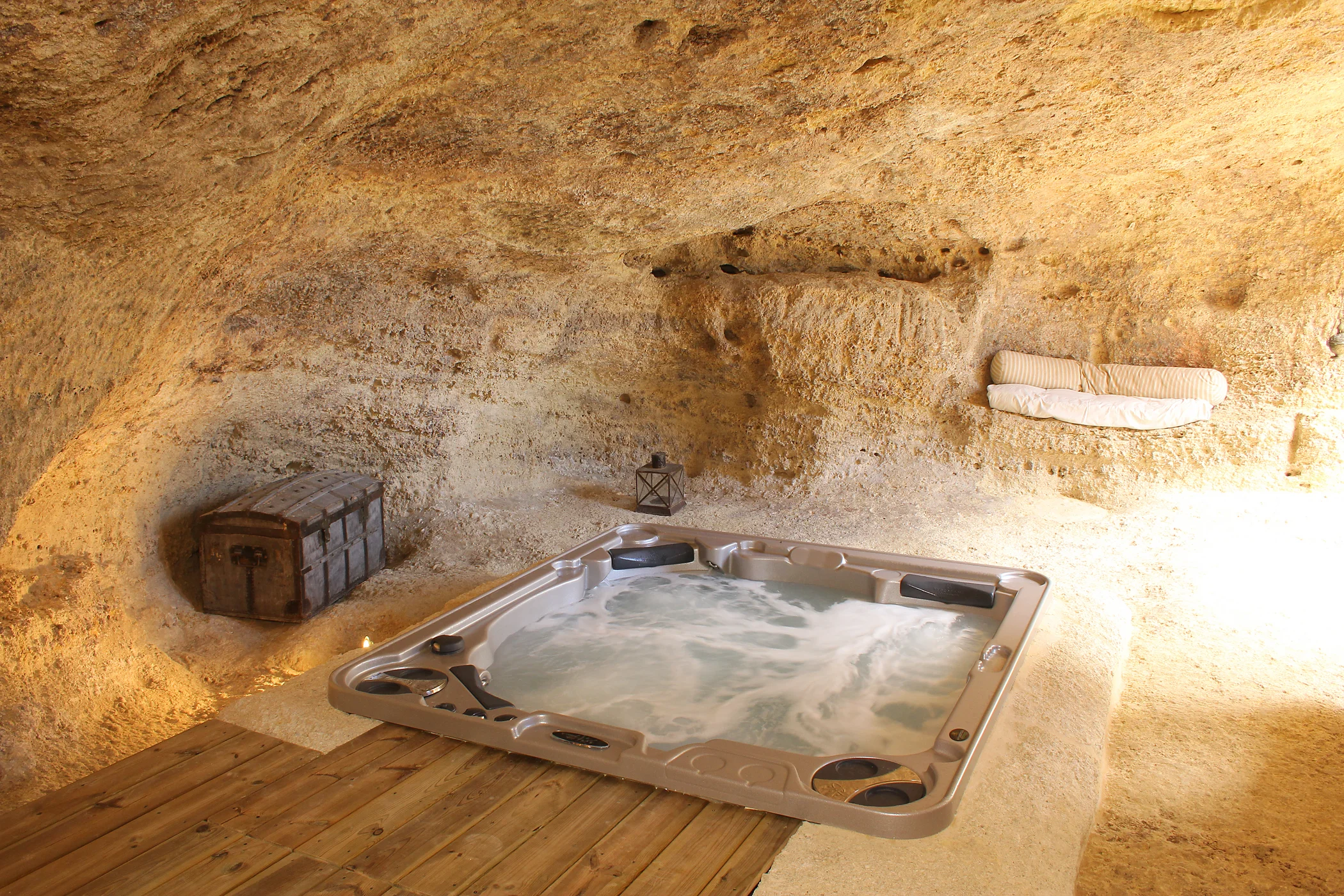Can Hot Tubs Be Installed Indoors?

When asked if a hot tub can be installed indoors, the short, simple answer is, “Yes!”
However, the longer answer, although still, “Yes!” is slightly more complicated and requires a bit of planning and forethought. We keep many of our hot tubs inside our retail stores around the world, so we know that hot tubs can have an indoor installation.
But just because you can do something, doesn’t mean there isn’t a step or two that you should know about. And that’s why we wrote this article, so you could see what you need to do for your inside installation to be successful.
This article will include:
- What access do you need for an indoor hot tub?
- Where to put your indoor hot tub?
- What can support your indoor hot tub?
- What flooring is right for an indoor hot tub?
- Do I need a permit to install an indoor hot tub?
- Do you need to ventilate an indoor hot tub?
- What electrical work do I need for an indoor hot tub?
- How do I fill and drain an indoor hot tub?
Hopefully, by the end, you’ll have a strong sense of whether an indoor hot tub works for you.
What Access Do I Need to Get a Hot Tub Indoors?
Most people have experienced the frustration of trying to move a large piece of furniture such as a couch or bed into a new dwelling and found out that it just won’t fit no matter which way you angle it or how many legs you take off. Knowing that you have enough space to get a hot tub into your house is an even bigger issue. There won’t be any legs or cushions that you can remove to make moving it in easier!
You need to make sure you have a wide enough area that will allow your hot tub to fit inside (Hydropool sells a 30” model that is designed to fit through doorways expressly for this purpose). In general, you need 40” of width and eight feet of height, on the entire path to the hot tub. What’s best is if you are building the home around the hot tub: then you can put the hot tub in place first.
Another issue that must be respected is that it is important to have enough space to access the mechanical components of the hot tub for maintenance. This includes access to the pump, heater, and electrical components, which might require a service panel. You need to leave from 2’ to 3’ around your hot tub to ensure access.
How to Decide Where to Put Your Indoor Hot Tub?
You’ll want to make sure there’s enough space around the tub once it’s installed. You’ll want to be able to move freely around the tub, both for getting in and cleaning. Having space for some furniture to relax on around the tub is also recommended.
If noise is a concern, especially in a shared living space, soundproofing measures might be needed to reduce the sound of the hot tub's pump and heater.
Proper lighting, décor, and possibly the addition of plants or water features can contribute to a relaxing ambiance.
What Can Support My Indoor Hot Tub?
Before installing a hot tub indoors, it's important to ensure that the floor can support the weight of the hot tub when filled with water and occupants. Consulting with a structural engineer may be necessary, especially if the installation is on an upper floor or if the building is old. This is the kind of thing you really want to get right.
What Flooring is Right for My Hot Tub?
Since water plays such a major role in hot tubs, you’ll want to make sure your flooring surrounding the tub is able to handle not only splashes, but possible puddles of water. Certain flooring materials do not stand up well to moisture. You don’t want to have wall-to-wall carpet in your hot tub area and even wood floors may cause problems. Another consideration is how slippery the floor surface will be when it’s wet. Flooring materials that provide some traction while allowing water to easily drain should be sought after.
Do I Need a Building Permit to Install an Indoor Hot Tub?
This will vary depending on where you live. Always check with local building authorities to ensure that your indoor hot tub complies with all applicable codes and obtain any necessary permits before installation.
Do I Need to Ventilate My Indoor Hot Tub?
Ventilation is something that many people might not think about when it comes to installing an indoor hot tub. But because of the warm, moist air created by the hot tub’s waters, proper ventilation is a must. You’ll want to choose ventilation fans that are rust-resistant and do not create much noise - hot tubs are made for relaxing, after all! Your best bet is to enlist an HVAC specialist as they’ll be able to advise you on a ventilation system that will prevent mold, mildew and excessive humidity from occurring in your hot tub room.
Do I Need to Do Any Other Moisture Control for My Indoor Hot Tub?
In addition to ventilation, you should also consider moisture-resistant materials for walls and ceilings, such as green board or cement board, which are commonly used in bathrooms. Additionally, a dehumidifier might be necessary to manage the humidity levels and protect the rest of the home from moisture damage.
What Electrical Do I Need to Plan for With an Indoor Hot Tub?
An indoor hot tub often requires a dedicated electrical line and usually a GFCI (Ground Fault Circuit Interrupter) for safety, if it is hard-wired (you don’t need this if you’re putting a plug and play model inside). The electrical supply must be installed according to local codes and requires a professional electrician.
Do I Need Different Insurance for an Indoor Hot Tub?
That’s an individual decision. But we’d encourage you to consider contacting your home insurance provider, as installing a hot tub can affect your home insurance policy due to increased liability and the potential for water damage.
How Do I Fill My Indoor Hot Tub?
Another thing that many people forget about when planning to install a hot tub indoors is a water source. Although most hot tubs cycle water through a self-contained plumbing system, you’ll need to fill the hot tub in the first place and top it up every so often as well. Having a faucet with an attachable hose installed in the hot tub room itself, for example, will allow you to easily fill your tub and maintain its water levels.
Where Can I Drain My Indoor Hot Tub?
Although you’ll want to make sure most of your water stays in the hot tub itself, you should have some sort of plan for the inevitable splashes, drips and sloshes. If you can fit your hot tub room with a floor drain you’ll save yourself a lot of worry when it comes to puddles or pooling water.
Can I Have an Indoor Hot Tub?
A hot tub can be put indoors, but there are a variety of factors that need to be checked off. You need to be able to find a way to get the hot tub into the location that you want, and then it needs to be built to allow proper ventilation, to be safe for everyone to use it and it needs to be drainable and re-fillable.
We have installed thousands of indoor hot tubs and the end results can be amazing. If you’re interested in discussing how to get an indoor hot tub, feel free to contact a local retailer here.






